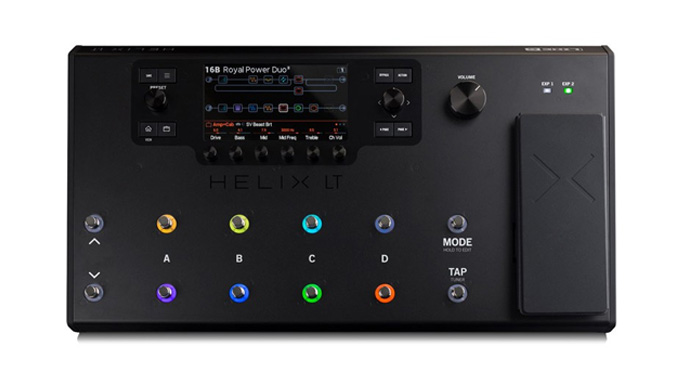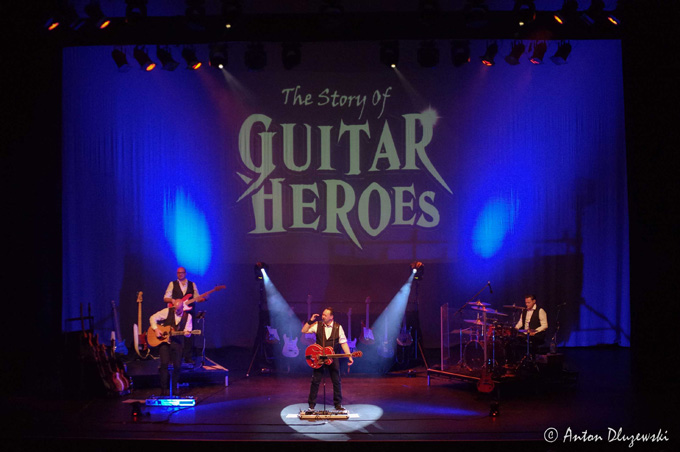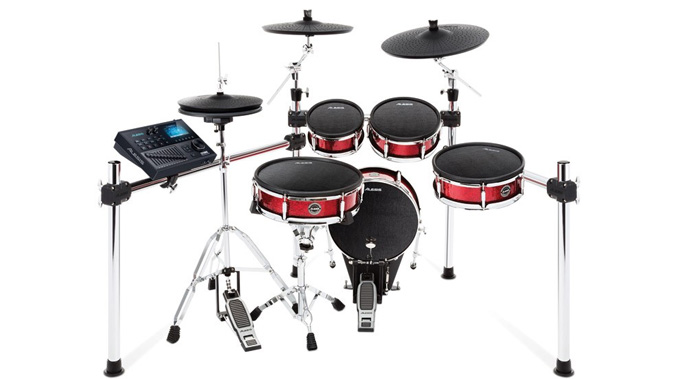How to Achieve a Silent Stage
Posted on Mon 14 August 2017 in entries

As a musician or sound engineer you may have come across the phrase ‘silent stage’, although the term ‘semi-silent stage’ might be a little closer to the truth, the idea is the same...to reduce the noise on stage to an absolute minimum, and it’s not so hard to achieve. Plus, the benefits of a silent stage are rather substantial.
Firstly, let’s cover off why you would want a silent stage. For a musician it would mean that everything you hear will be clearer, which will help you to perform better, it would also greatly reduce the risk of damaging your hearing (and let’s face it, ears are fairly important to us music folks). For the engineers amongst you, it will mean less bleed across microphones, increased control of individual channels and what (and how much) comes through FOH. So in a nutshell, a silent stage means a clearer listening experience for the performers, engineers and the audience. Now, I know what you’re thinking...this all sounds so idyllic, so why has it not been adopted so widely before? Well, musicians love the rumble and feel of a loud stack of amps and a thunderous bass (besides the fact that nothing screams Rock ‘n’ Roll more than a wall of Marshall cabinets). Obviously there will be the guys that are set in their ways and has pre-conceived ideas about amp modelling etc, but thanks to advances in technology it is now much better quality, much cheaper and less bulky gear to carry around than similar systems from 10 or 20 years ago.
Now we’ve covered off the ‘why’, let’s jump into the ‘how’. I’m going to break it down into sizeable chunks because it won’t all be relevant to everyone (except maybe this first bit).
Off the bat, arguably the most widely used implementation is the use of in-ear monitors (such as the Shure PSM series), which provide greater consistency of the monitoring mix (over a wedge-based system), wherever the musician walks, runs or jumps on-stage. Singers also often comment that they are able to sing better when using in-ear monitors because they can hear the other instruments and other vocalists more clearly, giving them a better point of reference for pitching. The reduced volume used with IEMs on a silent stage can also be beneficial for guitarists, bassists and drummers because it helps them hear other instruments more clearly and at a comfortable volume, meaning they can improve their timing and performance.

The Shure PSM200 Wireless Personal Monitoring System is a brilliant place to start for a silent stage
A good place to start with an IEM system is the Shure PSM200 bundle of transmitter, receiver and earphones which you can pick up for under £450. Shure is the go-to make for countless professional musicians worldwide thanks to their reliability and quality. There are ways to upgrade from the PSM200, for example the Shure PSM300 bundle, which transmits a 24-bit digital signal for extra clarity.
We recently gave the Shure SE earphones a test drive, comparing the different models in the range and found that immediately after listening to the single drivers you can definitely hear a little more bass in the dual drivers in comparison. Then listening to the Triple drivers; they seem to expand the sound range even more. Across the whole range, the Shure SE earphones boast up to 37dB of sound isolation. I didn't need to increase the volume at all due to the noise of the outside world. To really put this to the test I asked Ben from our drum department to play a drum kit behind me. After that little test I can definitely say that these series of Shure earphones do an amazing job at isolating the sound. Don't get me wrong, I can hear that there is something going on behind me, but what I'm getting in the buds themselves is clear as day and thanks to the 37db of isolation, it doesn't distract me from the audio I'm hearing through them either. They are also really comfortable and stay in place when jumping around.

The Line6 Helix LT Pedal is our pick for recreating classic, and unique, tones as well as achieving a silent on-stage guitar rig.
From there, let’s move on to guitars. This is, arguably, where technology has developed the most in the last few years with amp and effects modelling systems getting more accurate and more portable. For example, the Line 6 Helix system or Line6 Helix LT pedal (used by loooaads of famous guitarists such as Thrice (Dustin Kensrue), Jennifer Lopez (Andy Abad), Zac Brown Band (Clay Cook), Smashing Pumpkins (Jeff Schroeder), Evanescence (Jen Majura), Black Stone Cherry (Chris Robertson)...) offering stunningly accurate representations of classic rigs with the added bonus of having direct outputs that can go straight to the desk. These still give the sound of a real amp and speaker cabinet being mic’d up on stage but with none of the noise (or the risk of the microphone being knocked over or moved out of place). The Line6 Helix has also been employed by Phil Walker of touring guitar-based live show Story of Guitar Heroes.
<em>I have been performing on a ’silent stage’ for many years now. My show ’The Story Of Guitar Heroes’ uses in ear monitoring and amp modelling, there is even a screen around the drum kit to keep sound overspill down to a minimum. Being able to control the onstage sound to this degree is so important to me. The show itself pays homage to around 30 guitar heroes. It would be almost impossible to recreate all of those guitar sounds using conventional amps and cabs. Not to mention a logistical nightmare!!So for the guitar sounds we went for the Line6 Pod HD 500x straight into the PA. This unit has proved itself time after time. I am often asked why I keep the amps off stage? That is proof in itself that amp modelling works! Another huge advantage over amps is you get the exact same sound night after night from venue to venue. We are in the process of changing over to the Line6 Helix which takes modelling to another level yet again. With so many sound restrictions in force today, I see a ’silent stage’ being a logical step forward.
</em>
- Phil Walker (Story of Guitar Heroes)

To find out more about the Story of Guitar Heroes show, visit their website here and catch the show when it comes to a town near you! We highly recommend it!

The Digitech CabDryVR is a very handy tool for achieving the sound of a guitar or bass amp, without the logistical issues of one
Bassists are probably the closest of all the musicians to achieving the silent stage award as it is already fairly common place for a bass guitar to go to a DI box, or at least a DI that is built into their amp. One product that has been released recently that would improve the sound of a DI’d bass is the Digitech CabDryVR pedal, which is essentially a cabinet simulator that has been designed, and has emulations, for guitar and bass. The CabDryVR offers clear and realistic sounding cab simulations at a fraction of the cost (currently at £129) and also at a fraction of the size of a bass amp, making it much easier to carry to gigs and will get you closer to a full and professional sounding silent stage.

Alesis Strike Electronic Drum kit is a popular kit here at Absolute Music and is worthy of any professional stage
From the bass, it seems natural to progress to the drums, and this is where it can get tricky. If you thought it would be hard to convince a guitarist to ditch their Marshall stack for a small box and a couple of leads then save a thought for the chap that has to convince a drummer to use an electric kit. Although, electronic drum kits have come a long way in the last decade, and are far from the horrible sounding pads that haunted the 1980s. Roland, Yamaha and Alesis all make very respectable kits that sound great, sell on a regular basis here at Absolute Music and then find their way on to stages of all sizes and are used by drummers of all genres. Not only do they sound great but they offer a lot of flexibility to the drummer to control their own sounds and effects (such as reverb on just the snare etc or add a slapback to the kick for a double kick effect). To the sound guy it means no mic spill, and of course no danger of a bass drum mic being ermm... kicked by the singer.
If you are not ready to make the full leap to an electronic kit, there is a ‘halfway house’ of having triggers on the kit instead of microphones. The triggers, which are small clamps that attach to the rim of the drums, set off sampled sounds and these are then manipulated for front of house and monitors for the rest of the band. Although using triggers doesn’t quite achieve the silent stage effect, it does alleviate some of the issues that are caused by microphones (such as spill from other sources).
So there we go, the silent stage that in an ideal world scenario would see the musicians use in-ear monitors (such as the Shure SE range) rather than floor wedges, a bass guitar would go through a cabinet emulator (such as the Digitech CabDryVR) and then to a DI box, a guitar will go through an effects and amplifier processor like the Line6 Helix and the drums will be a decent electronic kit. Here’s where I go into hippy mode...Make no mistake, this is somewhat of a utopian dream and an ideal world scenario where our hearing would no longer be damaged, we would have incredible clarity on stage and the sound out front would be pristine but still very real sounding but… it is perfectly and easily do-able. If you like the idea of the silent stage but do not have any spare cash to invest on new equipment, the best thing that you can do straight away is to turn everything down. Simply float the idea at the next band rehearsal and/or gig and then let the sound engineer do their thing! Turning the amps down will help the FOH engineer massively and will benefit everyone (yes, everyone!).
We have a number of live sound experts here at Absolute Music so if you have any questions on any of the bits of equipment mentioned above or need some pointers on how to get the best sound at your next gig, just give us a call!